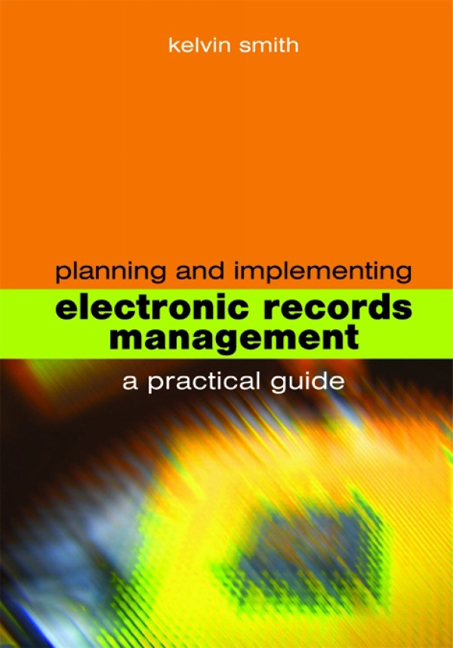8 - Preservation
from Part 2 - Design
Published online by Cambridge University Press: 08 June 2018
Summary
This chapter covers the storage and preservation of electronic records, examining the procedures that need to be considered in both the medium term (sustainability) and long term (preservation). It also provides pointers to the technical help that may be required when undertaking this phase of the design process. It also looks at business continuity planning for electronic records.
Sustainability/preservation
‘Sustainability’ is often used in electronic records management to cover those records and their metadata that require continued retention by the creating or owning organization until such time as they can be destroyed or transferred to an archive for permanent preservation. ‘Preservation’, on the other hand, is generally used to cover those records which have passed out of the custody of the creating or owning organization because they no longer have any active use for them and which have been passed to another organization where they will either be preserved permanently or destroyed. The descriptions might therefore be applied to electronic records in the medium term and long term respectively, but for the purposes of this book and for simplification, preservation will be used to cover both.
Why do we need a preservation strategy?
There is a growing realization that future access to electronic information is threatened. It is perhaps surprising that this has not come about before now. Part of this can be put down to commonly adopted policies and procedures to maintain information in paper form even though much of it has been created electronically. There is still a certain amount of distrust of electronically preserved information. People feel more at home with paper and, in the absence of overall strategies on the management and preservation of electronic records, they have continued in this comfort zone. Another factor has been the concentration on earlier phases of the life cycle of records – developing systems for the creation and management of current records – and on delivering services to the public electronically. However, over the past few years, as the technology has become more robust, reliable and (most important) secure, many sectors have developed strategies for maintaining and preserving their information resources solely in electronic form.
- Type
- Chapter
- Information
- Planning and Implementing Electronic Records ManagementA practical guide, pp. 129 - 144Publisher: FacetPrint publication year: 2007

